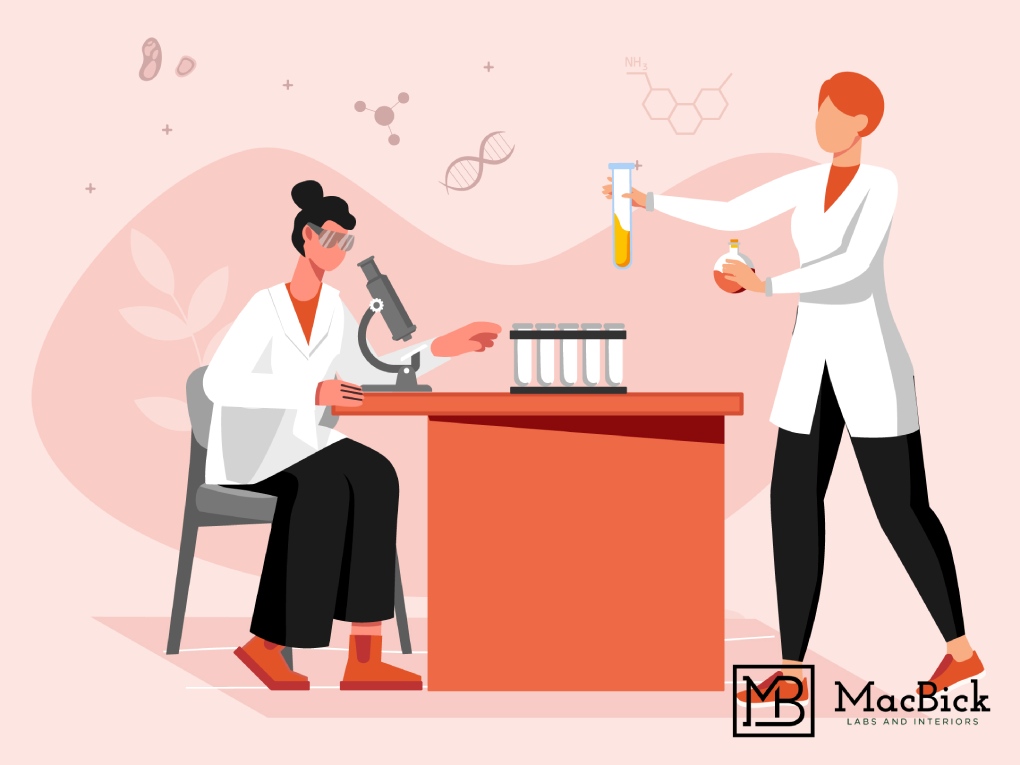The COVID-19 pandemic disrupted the operation of various markets. The same is valid for lab designs that strive to integrate lab users with hazardous materials and adequate equipment. While this hasn’t changed due to the coronavirus, several new elements were introduced to protect employees from various infectious diseases.
The transformation of lab designs is now more critical than ever since working from home is not a viable option for lab workers. In fact, in-depth research reveals that 57% of life scientists lost some of their jobs because of the coronavirus lockdown.
Appropriate research, experimentation, and development of products require materials, adequate working conditions, and special equipment. Here’s a closer look at how lab life will look post COVID-19:
TOUCHLESS INTERACTION
COVID-19 is known to spread through surfaces. It calls for touchless interaction throughout the lab. Labs are now utilizing voice-controlled tools to ensure researchers can work hands-free, reducing safety risks resulting from removing eyewear and gloves and enabling concentration only on experiments.
Various revolutionary voice assistants are integrated into electronic notebooks, databases, and lab equipment to facilitate research and ease the transcription of experiment data/results. The use of virtual assistants in lab environments continues to be an area of study for professional UX designers.
This way, they plan to curate innovative home voice assistants that will recognize methodologies, chemical names, and lab equipment.
VIRTUAL EVENTS
Social distancing measures have resulted in the widespread of virtual events. Businesses understand that virtual events are an incredible way to widen their reach. It is mainly because they are no longer restricted to a single location. It also means they are more accessible to startups and smaller companies who lack funds to fly employees overseas.
However, organizations need to consider how to engage people online, attend important events, and even conduct individual sessions. Proper schedules, easy login processes, and Q&As are integral for achieving successful virtual events.
On top of that, scientists are suffering from the loss of in-person networking. Well-designed virtual events are requisites to gain the necessary knowledge and foster partnerships.
ADAPTIVE WORK ENVIRONMENTS
COVID-19 has wholly transformed our relationship with work and has made using tools and technology all the more critical. To maximize the use and value of technology, employees need to adapt to a hybrid work model.
Creating a hybrid work environment alongside a personalized user experience (UX) will help you benefit from remote working. Becoming adaptive may be as simple as opening your email application or upgrading voice assistants, or adjusting heat, ventilation, and light while working.
REDEFINED SPACE UTILIZATION AND ITS IMPORTANCE
Even if we overcome this pandemic, it is abundantly clear that lab designs are not sufficiently ready for an infectious outbreak. For any future pandemic, lab designs might obtain space techniques inspired from top biohazard safety labs with segregation.
The prime focus is on a dynamic lab space that will enhance and promote service, efficiency, and activity. It is a proven mark when advanced lab design shares resources, optimizes operations, adapts to evolving circumstances and space planning.
COVID-19 demands space and design reinforcement. An emphasis on adequate lab space to maintain 6 feet of separation among staff is a mandatory demand. The abrupt change in budgeting, design modification, and various environmental conditions have many lab managers unnerved.
A lab with a functional and well-organized aspect ensures efficient work and progress. An open mindset, air filtration, and exhaust systems are small additions to improve workflow. An examination of manual operation, mechanical processes, and space remodeling is a critical asset for future adaptations.
COVID-19 is amplifying design trends within laboratories. Organizations are ready to re-establish features of lab culture.
A flexible lab capacity is crucial for strict adherence to maintain safe working conditions. Highlighting a separate space for sanitization and foreign contamination prevention will be a vital alteration in terms of future laboratory space remodeling.
TO SUM IT UP
Across the world, colleges, universities, and research centers are adapting to the prevalence of COVID-19. At the same time, lab managers are seeking ways to keep labs open and operating without risking employee’s lives.
In fact, the U.S. National Primate Research Center director at the University of California describes that on-site staff numbers have been halved to spread them out across the lab. This way, they can continue operating without putting anyone’s life in danger.
Are you planning to get your lab renovated to serve efficiently during the pandemic? Reach out to our Lab Life Team to get started on re-imagining your lab in this post coivd-19 world.


